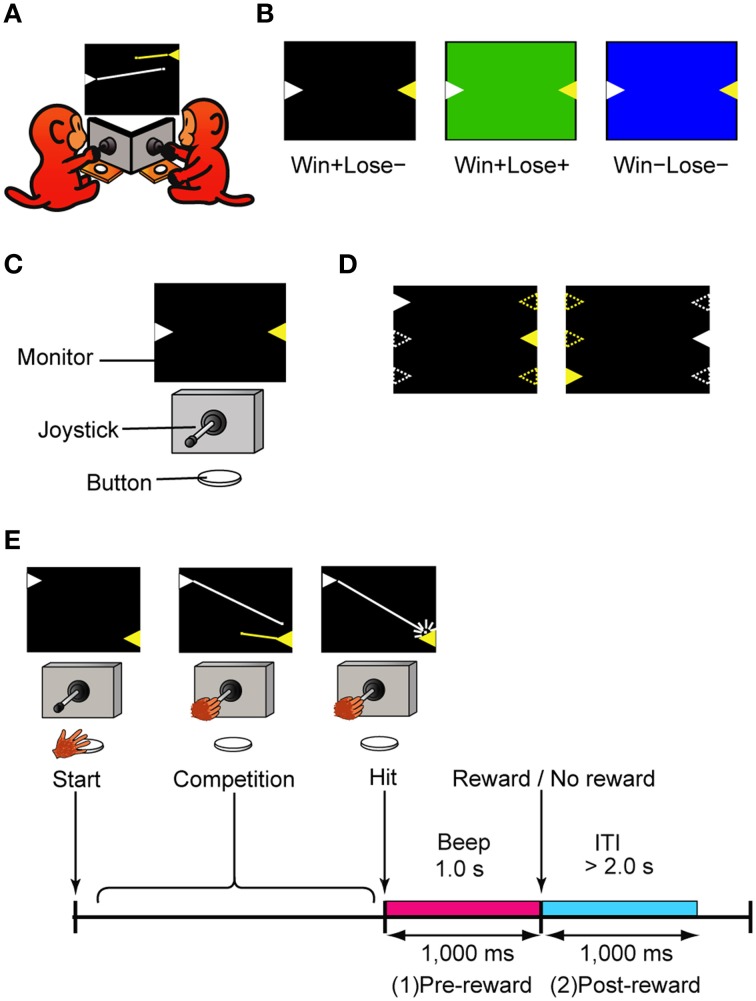Figure 1.
The competitive video game. (A) Schematic diagram of the game. Each monkey shot bullets from the turret (triangle) of its color, which was fixed for each monkey. The lines from the turrets represent the trajectories of the bullets and did not appear in the actual game. (B) Three types of trials used in this study: Win+Lose−, Win+Lose+, and Win−Lose−trials. In Win+Lose− trials (black background), the winner got a reward and the loser did not. In Win+Lose+ trials (green background), both the winner and the loser got a reward. In Win−Lose− trials (blue background), neither the winner nor the loser got a reward. (C) Experimental setup. There was a joystick and a button in front of each monkey. Monkeys shared one PC monitor. (D) Position and spatial configuration of the turrets. The turret positions were randomly selected from top, middle, or bottom, and left or right. These positions changed from trial to trial, but they were fixed within a trial. Open triangles represent possible positions at which turrets could appear. (E) Time course of the competitive shooting game and the analysis periods. ITI, Intertrial interval.

